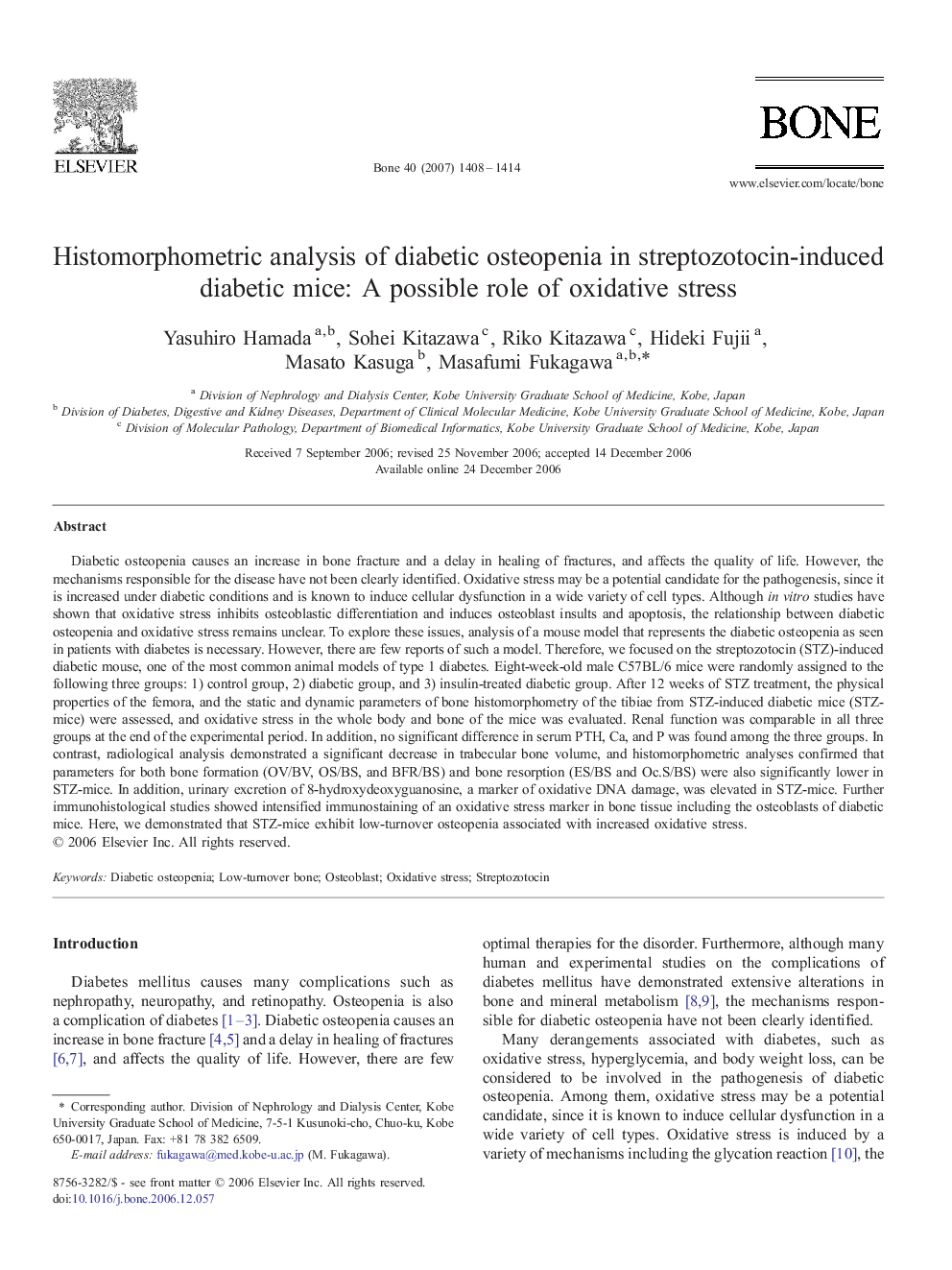| Article ID | Journal | Published Year | Pages | File Type |
|---|---|---|---|---|
| 2781996 | Bone | 2007 | 7 Pages |
Diabetic osteopenia causes an increase in bone fracture and a delay in healing of fractures, and affects the quality of life. However, the mechanisms responsible for the disease have not been clearly identified. Oxidative stress may be a potential candidate for the pathogenesis, since it is increased under diabetic conditions and is known to induce cellular dysfunction in a wide variety of cell types. Although in vitro studies have shown that oxidative stress inhibits osteoblastic differentiation and induces osteoblast insults and apoptosis, the relationship between diabetic osteopenia and oxidative stress remains unclear. To explore these issues, analysis of a mouse model that represents the diabetic osteopenia as seen in patients with diabetes is necessary. However, there are few reports of such a model. Therefore, we focused on the streptozotocin (STZ)-induced diabetic mouse, one of the most common animal models of type 1 diabetes. Eight-week-old male C57BL/6 mice were randomly assigned to the following three groups: 1) control group, 2) diabetic group, and 3) insulin-treated diabetic group. After 12 weeks of STZ treatment, the physical properties of the femora, and the static and dynamic parameters of bone histomorphometry of the tibiae from STZ-induced diabetic mice (STZ-mice) were assessed, and oxidative stress in the whole body and bone of the mice was evaluated. Renal function was comparable in all three groups at the end of the experimental period. In addition, no significant difference in serum PTH, Ca, and P was found among the three groups. In contrast, radiological analysis demonstrated a significant decrease in trabecular bone volume, and histomorphometric analyses confirmed that parameters for both bone formation (OV/BV, OS/BS, and BFR/BS) and bone resorption (ES/BS and Oc.S/BS) were also significantly lower in STZ-mice. In addition, urinary excretion of 8-hydroxydeoxyguanosine, a marker of oxidative DNA damage, was elevated in STZ-mice. Further immunohistological studies showed intensified immunostaining of an oxidative stress marker in bone tissue including the osteoblasts of diabetic mice. Here, we demonstrated that STZ-mice exhibit low-turnover osteopenia associated with increased oxidative stress.
